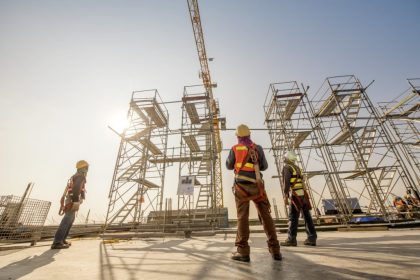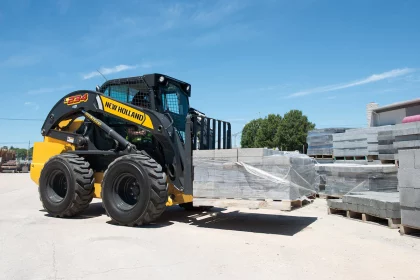The construction industry is booming, but few projects are completed on time and within their original scope. There are many reasons, but changes to timelines and scope can usually be boiled down to problems with productivity.
Think about your last few job sites. Can you honestly say they were perfectly productive? Unfortunately, few construction professionals can, which begs the question: how can productivity be improved on a construction site?
You want your project to run smoothly and efficiently, but you can’t sacrifice quality or safety, either. And even though poor productivity can negatively impact quality and safety, it isn’t easy on your wallet.
As the old saying goes, when you waste time, you waste money. In the construction industry, that means big money. A recent McKinsey Global Institute study found that if construction productivity increased by 2.8%, global construction spending would increase by $1.6 trillion.
Whether your jobs are in the tens of thousands or tens of millions, productivity matters and can help you stay profitable. Here’s what you can do to increase productivity on your construction sites.
Make a Plan
Every great site begins with a plan. And this doesn’t just mean a method of execution for your project. The best site plans also account for the division of labor, management needs, communications standards, site logistics, waste management, and more.
Sure, if you’re building a new school, you naturally need a plan for how to erect the structure. But to keep your site productive, you’ll need to plan for much more than executing the blueprints.
Plan for each part of the project, what materials and labor you’ll require, and also consider possible barriers to productivity. Planning for disruptions from the start will make them so much easier to deal with if and when they arise.
You’ll also need to put together a timeline to address every part of the plan. Make inside and outside dates so you can adjust accordingly when problems arise. Doing so will help you adapt to changes and disruptions with agility.
Communicate With Your Crew
Creating a workable plan is paramount, but it will do very little good if you don’t communicate the details with your team. To successfully communicate with your staff, create a chain of command that enables you to work directly with your team leaders.
Having a chain of command will help you avoid duplication and communicating too many messages with too many people. Inform your core management team of anything you want them or their staff to know and instruct them to carry the messages back to their crew accordingly.
You can do this through weekly meetings, emails, or by using a messaging app. First, figure out what type of communication you need and how frequently you need to update your team to keep everyone in the loop on everything they need to know.
Manage Your Waste
Waste is a huge concern on every site. Not only does a messy site stifle productivity, but it’s also unsafe. So you need to do everything you can to keep your project area neat and tidy to keep everything running smoothly.
Start by creating a waste management plan. It addresses where every type of material belongs, including landfilled waste, recyclable waste, reusable items, and hazardous waste. Also, create standards and expectations for your crew. For example, communicate how frequently you want their work areas cleaned to ensure compliance.
Add self dumping hoppers to your site to make cleanup easier for your crew. These handy bins are sturdy and liftable by forklift, so you can pack them full of whatever you need to throw away and easily remove them from the site when needed.
Hire a Material Management Professional
Never heard of a material management professional? Then, it’s time to get familiar. These people take the guesswork out of sourcing and delivering the supplies you need to complete your project. They even help with lost, damaged, or delayed material.
Their service can help you focus on what you do best—constructing structures. But they can save you big money beyond taking something off your plate. The National Electrical Contractors Association estimates that up to 40% of a project’s labor costs can be attributed to material handling.
Material handling takes up a lot of your crew’s time, the time they could spend on-site construction instead. So even though these professionals aren’t free, hiring a material manager will definitely help your labor be more productive and, ultimately, cost less. In addition, they will have access to high-quality construction equipment. This also includes compaction equipment.
Embrace Technology and Innovation
The digital age has impacted every industry, construction included. There are so many ways you can use technological innovations to your advantage so your site can run smoother and more efficiently.
One way you can do this is by using a workflow application. With this type of tool, you can easily create tasks, assign them to different crew members, automate your communication, and more!
In addition to advancements in information technology, building technology has improved, too. As a result, builders are creating structures with new materials that are more efficient and environmentally friendly than the building materials used in previous decades.
You can see this in the growing popularity of prefabricated buildings. With prefabrication, buildings or parts of buildings are assembled in advance, with the final composition taking place onsite. As a result, structures built with pre-made components take less time and labor to construct, making these sites far more productive.
Provide Training
With the right training, you can easily avoid so many blunders that add time and labor to a project. Educating your crew about what they’re doing and how to do it safely and efficiently is the key to reducing time-wasting mishaps.
Create a thorough training and safety course for your crew. Make sure every crew member, from the team leader to the day laborer, complete the training and safety course. Everyone needs to abide by the same rules and have the same expectations if you want your educational efforts to impact productivity positively.
Productivity aside, prioritizing safety and training your team on the techniques they’ll use onsite just makes good sense. Everyone wants to understand what they’re doing and know how to do it safely.
Make Goals and Offer Rewards
One way you can promote productivity is by incentivizing it! For example, create goals for reaching deadlines on time and reducing workplace accidents. Then, when your crew achieves a goal—reward them!
For example, for every week that goes by without a workplace accident or injury, you could buy the team with a pizza lunch on Friday. This is an uncomplicated way to incentivize productivity and safety while showing your crew how much you value your work.
Being productive is possible, you just need to implement some common sense tactics, like planning and communication, to ensure your team operates with maximum efficiency. The next time you start a new project, plan to be productive, and you’ll go far!





